BURGUNDY, SUPER TUSCANS AND CULT CALIFORNIAN WINES ARE CATCHING TOP DOLLAR
DIVERSIFYING YOUR CELLAR WITH INVESTMENT-QUALITY WINES
With an uncertain market climate, savvy investors are turning to unconventional investments in efforts to diversify their portfolio, minimize losses, and maximize gains. While some markets have cooled in the uncertain market climate, others have soared: the ultimate example being the Wine Market, which has demonstrated sizable gains and resilience. According to Cult Wines, data compiled over the last thirty years shows that a £5,000 investment in the FTSE 100 in 1984 would now be worth £34,473; The same investment in 18 cases of Lafite Rothschild 1982 would be worth £698,832. Even on a broad scale, the Liv-ex 1000 closed in 2016 at a record high with gains of 22.3% over the course of the year.
While Bordeaux continues to perform strongly, other wine regions of the world are producing investment quality fine wines that have increased significantly in market prominence. In fact, the best performing sub-index of the Liv-ex 1000 is ‘Rest of the World 50’ (the ten most recently physical vintages for five wines from Spain, Portugal, the USA, and Australia) which increased over the last five years by a staggering 47.48%.
As a growing component of the tangible asset portfolio, wine cellars void of Bordeaux should not be overlooked. Due to market misconceptions, these areas represent the greatest potential for amplified risk exposure and oversight in effective portfolio management. High performing regions include Burgundy, Italy and California, as well as exploratory investment potential in South Africa and Australia, among others.
Here are some top market performers to be aware of when assessing a cellar:
FRANCE
Bordeaux producers carry with them the prestige of an ironclad reputation established by consistent quality and cellaring potential–which interprets to strong long-term investment potential. Leading châteaux include familiar names such as Mouton-Rothschild, Margaux, Lafite-Rothschild, Haut Brion and Latour. These ‘First Growths’ routinely captivate international buyers at leading auction houses; In October 2016, Christie’s London auctioned eleven bottles of Latour 1945 for $43,217 and, more recently, a case of twelve bottles of Château Palmer 1961 sold for $33,476.
Burgundy, a region known for its superb red and white wines with a market driven by scarce quantity, producing only 25% the quantity of Bordeaux (excluding Beaujolais). Yet this small production has outperformed Bordeaux with the Liv-ex Burgundy 150 indicating a 44.3% increase over the last five years. Among the most renowned producers is Romanée-Conti. In 2014, Sotheby’s made headlines with the sale of a superlot comprised of 114 bottles of Romanée-Conti spanning from 1992 to 2010. The lot achieved a record-setting $1.6 million, calculating to $14,121 per bottle.
ITALY
According to Wine Investments, select Italian wines are becoming increasingly prized as part of a well-rounded investment portfolio. In the last year alone, the Liv-ex Italy 100 has increased 18.26%, which coincides with increased interest as well as concerted efforts to increase Italian wine exports, up 17% in 2016. Fine wines with investment potential include producers in Piedmont and Tuscany, most notably the Super Tuscans, including vintages from the producers’ Sassicaia, Ornellaia, Masseto, Tignanello and Solaia. In today’s market, the legendary 1985 Sassicaia, often described as perfezionare, retails as high as $6,000 per bottle.
CALIFORNIA
With the growing interest in fine wines from the New World, California is one of the largest producers with investment quality dominated by the ‘Cult Californian’ Wines. These wines are produced in extremely small volumes, have notable cellar-potential and routinely obtain high scores, thus driving the market to some of the highest values paid for wine. Leading California fine wines include Scarecrow, Harlan Estates and Screaming Eagle. In 2000, a single bottle of Screaming Eagle Cabernet 1992 raised a staggering $500,000 for charity, the sale of which still has yet to be beat.
OUR SERVICES
Offering expert Advisory across sectors, our dedicated Advisory and Sales Agency teams combine strategic insight with transparent advice to guide our clients seamlessly through the market. We always welcome the opportunity to discuss our strategies and services in depth.
SUMMER FEVER: BUYING SMART WHEN THE HEAT WAVES HIT
HOW TO AVOID VACATION IMPULSE ACQUISITIONS AND BUYER’S REMORSE
Have you ever bought a work of art that seemed like a great idea at the time, but now you can’t stand to look at it? We all have those precious paintings hiding in our closet, out of sight, and we remain puzzled why we were ever drawn to the piece in the first place.
Some blame those long summer nights, others succumb to impaired judgment on hot afternoons after that complimentary glass of wine at the gallery opening. Whatever the reason, vacation art always looks better on the beach and buyer’s remorse is in full vengeance post summer vacation.

Images courtesy Christie’s
So, how can you avoid the mistake of acquiring a painting you won’t like come Thanksgiving?
EXAMPLE #1
- Problem: You let your emotions do the buying and have acquired a gauche work of art. We always advise our clients to buy what they love, but this notion can run away with you when under the sun of your favorite summer hot spot. After all, the gallery opening was happening, you met the artist, and you were swept away by the idea of your vacation colliding with a paint bucket. But after your tan has faded, will the painting really bring back the memories? Is this the best you can find at that price? Does the work of art sync with the other pieces in your collection? Do you really love it? And we mean, really?
- Solution: Sit back and assess. You are on vacation, so what’s the rush? Ask the gallery if you can have a period of time, say three days to a week, to consider the painting before they sell it to someone else. If they are a good gallery, they will give you the courtesy of a phone call should another buyer show interest. If you still love it within that grace period, then get it home! But you may be relieved you did not rush.

Image courtesy Christie’s
EXAMPLE #2
- Problem: You are uncertain which artists have long-term market potential. It is all everyone seems to be talking about! And all the information can be challenging to apply when it comes to actually purchasing a work of art. But it starts with identifying quality.
- Solution: Learn to distinguish between Decorative Quality and Investment Quality. We always encourage clients to buy what they love, and sometimes it will be a decorative piece. But it is possible to buy what you love and acquire smart. The best place to start is discussing your collecting interests with your art advisor. Or even frequenting museums a bit more often. Which brings us to…
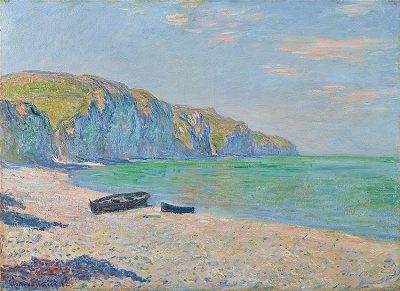
Image courtesy Pierre Bergé & Associés
EXAMPLE #3
- Problem: You haven’t been to a museum in months, maybe years. You need to look at the best to understand quality. Regularly visiting the permanent collections and curated exhibitions of museums is the greatest way to do that.
- Solution: Check out these great summer exhibitions! This is the final month to see The New Museums’ exhibition of new works by Lynette Yiadom-Boakye, which concludes September 3rd. The Hunter Museum of American Art in Tennessee just opened Thrill After Thrill: Thirty Years of Wayne White on June 30th. Meanwhile, the Seattle Art Museum is exhibiting Spencer Finch: The Western Mystery. If you are in Raleigh, The North Carolina Museum of Art is exhibiting a curated photography exhibition titled You + Me now through September 3rd.You can always request your art advisor arrange specific visits to museums, galleries and art fairs. Having a knowledgeable advisor by your side can prevent some of common pitfalls and buyer’s remorse.
SPRING JEWELRY AUCTIONS REVEAL CURRENT TRENDS
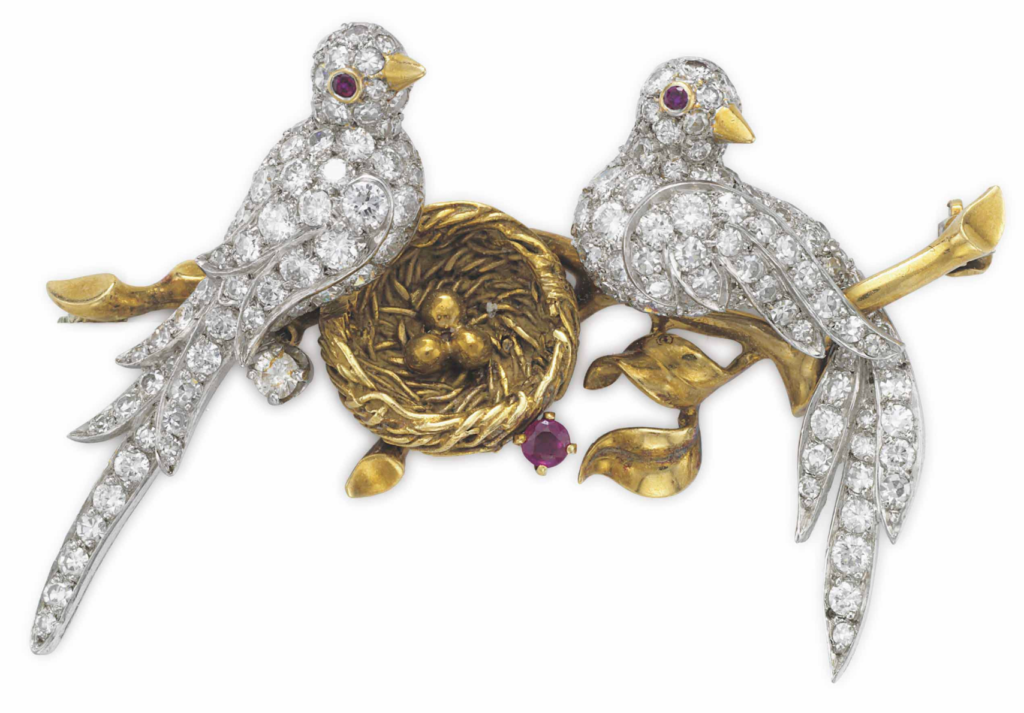
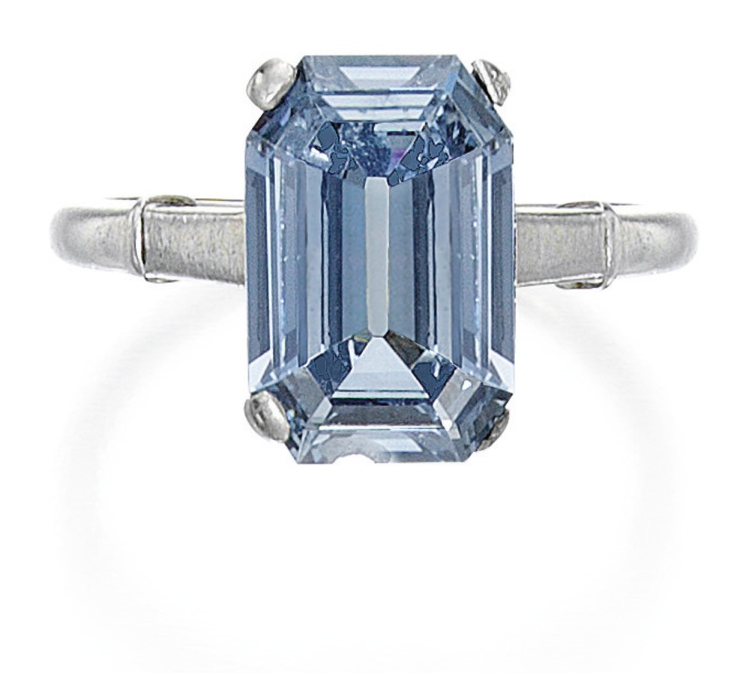
This year was particularly intriguing as we saw many collections from prominent individuals go up for sale, including the Dodo Hamilton Collection at Freeman’s, which included a 16.56 carat emerald-cut diamond, which sold for $802,000. Another lot of note is the Farnese blue diamond, which was given to Elizabeth Farnese (daughter of the Duke of Parma) as a wedding gift in 1715. This diamond was passed down through royal families all throughout Europe. Sotheby’s sold the diamond in their Geneva Magnificent Jewels auction for $6.7 million, which exceeded the pre-sale estimate of $3.6 million – $5.2 million. Christie’s New York had an auction on June 12th where many pieces from the Rockefeller collection were sold, including 2 bracelets by Jean Schlumberger that both more than tripled their estimates.
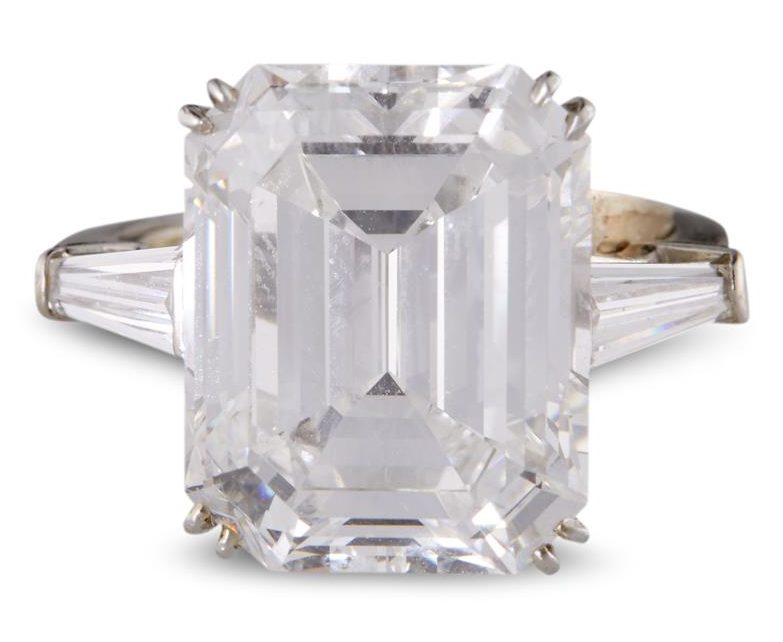
In addition to the blue diamonds outlined above, it is also a good time to sell:
- Art Deco Cartier – Christie’s sold an Art Deco diamond bracelet (lot 94) by Cartier for $118,750 (estimate: $60,000-80,000) in their Magnificent Jewels sale on June 12th.
- Quintessential Van Cleef & Arpels brooches – Christie’s sold a gold, diamond and ruby ‘Love Birds’ brooch by VCA (lot 76) for $47,500 (estimate: $12,000-$18,000) in their Magnificent Jewels sale on June 12th.
- High Quality White Diamonds – In the Sotheby’s and Christie’s Magnificent Jewels sales, we saw many D color, Flawless or Internally Flawless diamonds sell for within or above estimates. For example, Sotheby’s Geneva sold a 51.71 carat (lot 373) round brilliant-cut diamond that is D color and Flawless for CHF 9,260,000 (estimate: CHF 7,870,000-9,100,000). In the exact same sale, an oval diamond that weighs 50.39 carats (lot 350) that is D color and Flawless sold for CHF 8,131,000 (estimate: CHF 6,960,000-7,680,000).

In the same sale (lot 163), a ‘mystery-set’ (method of setting stones for which the house is known) sold for $162,500 (estimate: $70,000-100,000).
Doyle in New York, also sold a VCA gold, black enamel and sapphire ‘dog’ brooch (lot 286) for $16,250 (estimate: $2,000-3,000).
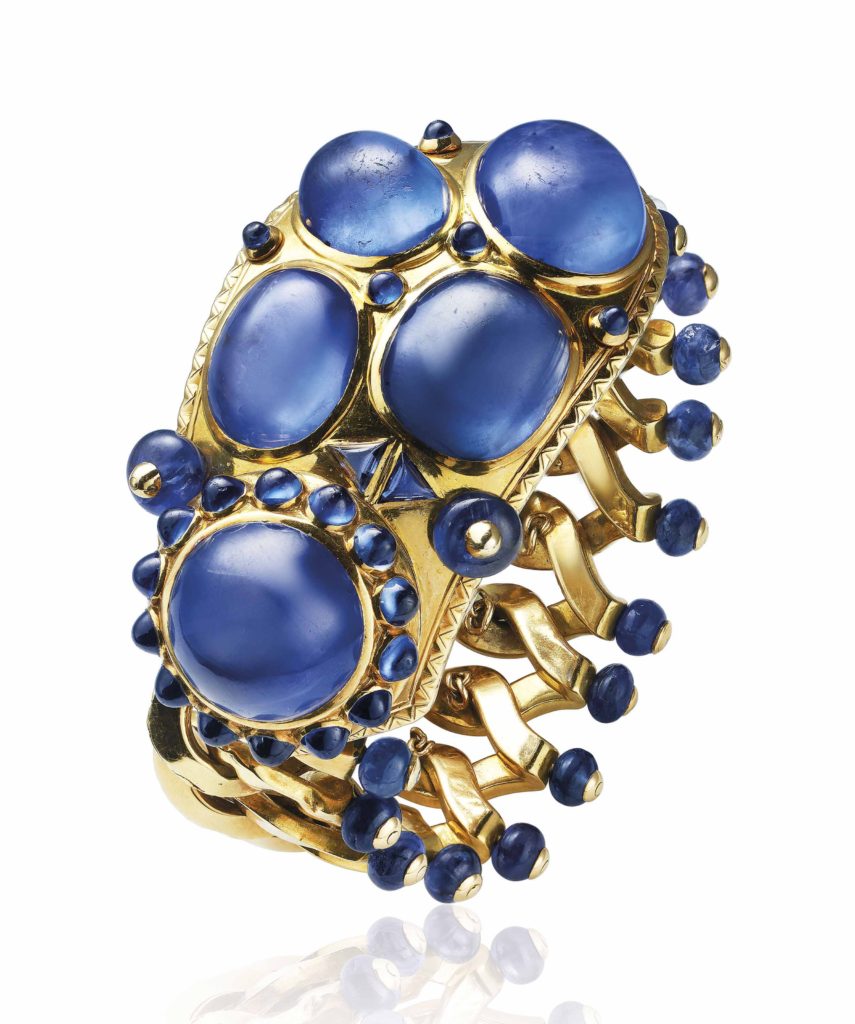
The Spring jewelry sales are showing that it is still a great time to sell your signed pieces and standout stones.
– Lauren Peck, National Tangible Asset Manager, GG
RELATED CONTENT
- Kate Waterhouse Joins The Fine Art Group as Director & Senior Jewelry Specialist
- White Glove Jewelry Sale at Sotheby’s for The Fine Art Group Client
- Watch TFG’s New York Luxury Week 2023 Webinar
AS A NON-TRADITIONAL COUPLE, WHAT CAN WE DO TO BETTER PREPARE FOR THE FUTURE?
Just this last fall, I opened the Sunday edition of The New York Times to find an article detailing an all-too-familiar story. Mr. Bill Cornwell and Mr. Tom Doyle lived together in their West Village brownstone loyally for over fifty years, creating a home together which nourished their deep and loving relationship. Sadly, Mr. Cornwell died in 2014; and now his will – which bequeathed the brownstone to his longtime partner – is in dispute. At the age 85, Mr. Doyle was turned out from the home he had known for the past five decades, and now is entrenched in a legal battle with Mr. Cornwell’s closest relatives. Mr. Cromwell created his last will and testament roughly a decade ago, naming his longtime partner as the recipient of all of his assets, including the three-story brownstone. Regrettably, the execution of the will was witnessed by one person and not two as required in the state of New York, making it “legally invalid.” Without a valid will, Mr. Cromwell’s assets go to his next of kin, two nieces and two nephews, who have since sold the brownstone for over $7 million dollars, leaving Mr. Doyle to live the remainder of his days in unfamiliar surroundings. I found myself asking the question, “Are we protected and, if not, what can we do to better protect ourselves?”.
For me, this story resonated deeply. After a recent move from St. Louis to Philadelphia, my partner and I were talking about our future. As we were settling into a new home where we could focus on our new life, including our passion for collecting, I began thinking about our own situation. Although I assist others with the management of their tangible assets on a daily basis, I still contend with the long-term care and management of mine. With over ten years in the fine art auction industry, I have witnessed the above situation countless times – in the arms of grief, friends and families alike are often not so concerned about the multi million-dollar family business or the generational summer home; these assets have usually been appropriately planned for years ago. But on many occasions, what they are quarreling over are high-value tangible assets with significant sentimental value. With the United States Supreme Court’s 2015 ruling in favor of same-sex marriage, these very problems now plague high net worth same-sex couples and can easily be resolved with appropriate planning and care.
Sexual orientation is a growing standard demographic variable in market research, along with traditional factors such as age, income, net worth, occupation, and education. A recent study conducted by Walter H. Zultowski, PH.D. shows that between 4% and 7% of high net worth households identify as gay, lesbian, bisexual or transgender. Although this may seem like a small number, of those polled 4% translates to approximately 300,000 same-sex households. This survey also shows that the high net worth LGBT market tends to be younger and slightly more educated than the high net worth heterosexual population. These individuals are also more likely to be found in professional occupations and business-owning categories where they can continue to grow their wealth and diversify investment though various asset classes. For many attorneys, wealth advisors, and risk management firms, this change opens a new segment of potential clients and raises the question: How do we solve problems for this new, and largely overlooked, demographic?
For advisors who are not LGBT themselves, it is important to identify and understand the very specific issues this group may face when managing risk and planning for the future. Tangible assets are now often considered a significant percentage of an individual’s portfolio, and these assets need both care and management, with strategic oversight for long term planning.
BELOW ARE THREE KEY FACTORS I LEARNED ALONG THE WAY
ASSEMBLE A TEAM OF EXPERTS
Clients and wealth managers who wish to appropriately manage tangible assets should first develop a team of trusted experts including accountants, attorneys, an independent appraiser, and an independent insurance advisor who specializes in high net-worth clients. Experts in their respective fields can easily guide clients through the unfamiliar waters of fine art and tangible assets.
SECURE AN ACCURATE APPRAISAL
The appraisal itself is the foundation for every decision made with tangible assets. In order to appropriately manage what can be a varied portfolio, it is important to conduct an insurance valuation for retail replacement purposes. This valuation reflects the cost of replacement after loss or damage. Oftentimes, responsibility for up-to-date values lies with the client. Being under-insured can result in loss, or worse, a voided policy. Having more insurance than necessary can lead to unnecessarily high premiums or disputes, in the case of a loss or damaged asset. An accurate appraisal will safeguard the owner from undue stress related to the loss and result in a quick settlement for replacement.
For those fiduciaries seeking to preserve wealth and manage tangible assets for same-sex couples, it is essential to remember that without a recognized legal relationship, there is no automatic safety net. According to the law, the estate (including high value tangible assets such as fine art, antiques, jewelry, investment wine and spirits, classic cars, etc.) will be inherited by the closest living family members, without proper estate planning in place. Like with heterosexual couples, a will can protect the assets and wishes of same-sex couples, properly dividing assets per an individual’s or couple’s wishes and avoiding costly inheritance tax issues. It is recommended that a fair market valuation is conducted for estate planning purposes. This valuation not only provides a clear understanding of the value of assets in the current market, but also provides a clear baseline value in terms of investment, return, and strategic estate planning.
TRACK NEW ACQUISITIONS AND MONITOR APPROPRIATE MARKETS
Collectors should consider cloud-based software to appropriately manage their assets. These convenient, access-anywhere systems can store important details about each asset along with value, provenance, exhibition history, and oftentimes, documentation. Further, collectors should continue to request and receive insurance schedule reviews by an independent appraiser in order to account for changing trends within the market. In addition, appraisers can continue to conduct annual and semi-annual revaluations for those assets that have experiences market shifts.
In the event that the Supreme Court decision is ever overturned, fiduciaries and non-traditional couples alike prepare for the unexpected. It is important that the estate planning strategy covers as many unknowns as possible. Encouraging non-traditional couples to create a domestic partnership agreement, living wills, and living trusts in order to properly manage their tangible assets will allow greater control of how these assets are distributed or monetized in times of disruption.
– Shane David Hall, National Tangible Assets Manager
FINDING THE RIGHT ‘FIT’: THE IMPORTANCE OF CONNECTING WITH YOUR TANGIBLE ASSETS TEAM
By Nick J Alexander, Private Risk Management, Wells Fargo Insurance Services USA, Inc.
Imagine your favorite pair of blue jeans. The ones that fit perfectly. You can wear them all day or curl up on the couch and nap in them. Think about your first cup of coffee in the morning. The aroma alone puts a smile on your face and gives you hope for a prosperous day. Now think of your best friend, the one you trust no matter the topic. These simple, everyday items give us comfort, put us at ease and allow us to trust.
Now imagine sitting across the table from your insurance broker or your family advisor. The person with whom you share your personal financial information and the value of your tangible assets. Imagine not feeling comfortable with this person. Imagine having to “come out” to this person when you don’t feel comfortable, at ease or have trust.
FROM POWERLESS TO POWERFUL
A new client recently sent me insurance information to review for her existing personal insurance program. Included was a separate policy for a person who lived at the same address but was insured by a different company. When I asked who this person was and if I needed to include her and her vehicle on the proposal, the client replied that she had “sent this document in error”. I told the client I noticed the document had the same address and that I would need to know about each individual living in the household. With hesitation, she said it was “her partner.”
“Great!” I replied, “We should look at placing you on the same policy for multi-car discounts, one billing, and now you will have one broker to discuss your personal insurance program with.” I then added, “My partner and I saved several hundred dollars and simplified our household bills.”
She replied, “You have no idea what a relief it is to work with someone who understands us. We were fearful of telling our current broker about us, so we insured everything separately.”
Great progress has been made for the LBGT community across this country in recent years. However, some still live in fear or are hesitant to “come out” to people they work with, including their insurance broker. Wouldn’t it be great if we could all approach our conversations with our trusted advisors the same way we approach our first cup of coffee in the morning?
When choosing a team to help manage your personal assets, whether it’s your art collection, finances or personal insurance program, look for the right fit—just like your favorite pair of blue jeans.
With over 20 years of experience in the field of personal insurance and risk management, Nick J. Alexander is a highly trusted expert who regularly advises regarding private risk management for traditional and non-traditional couples alike.
APPRAISALS & VALUATION SERVICES
Valuation of our clients’ assets forms the foundation of our business, enabling us to develop strategies to maximize a collection’s value.
The Fine Art Group was launched in response to a growing demand for wholly independent valuation services along with a requirement for a more personal service in today’s more complex art market. We provide confidential valuations for the purposes of Insurance, Taxation & Probate, Trusts & Estates, Family Division and Divorce, Sale on the Open Market or Art as Collateral.
Each of our clients are unique and our appraisal approach is tailored to meet their needs. To learn more, contact us at (610) 254 8400 or info@pallmallartadvisors.com.
This material is for informational purposes and is not intended to be exhaustive nor should any discussions or opinions be construed as legal advice. Contact your broker for insurance advice, tax professional for tax advice, or legal counsel for legal advice regarding your particular situation. Products and services are offered through Wells Fargo Insurance Services USA, Inc., a non-bank insurance agency affiliate of Wells Fargo & Company, and are underwritten by unaffiliated insurance companies. Some services require additional fees and may be offered directly through third-party providers. Banking and insurance decisions are made independently and do not influence each other.
© 2016 Wells Fargo Insurance Services USA, Inc. All rights reserved.
FROM CHAOS TO CLARITY
DEVELOPING A PLAN & IMPLEMENTING STRATEGIES FOR LONG-TERM COLLECTION MANAGEMENT
It’s a scenario many of us are all too familiar with. Overtime as large collections grow and management changes hands, collections have a tendency to become unorganized, valuable items are misplaced or missing all together, and no one really has a clear picture of the entire collection or its significance. The frustrating scenario conjures up images of dusty piles of paper, leaning stacks of old frames, dated filing cabinets and storage closets employees would just as soon forget.
Spring is here, and with the brighter days it is time to clear the cobwebs, assess the situation and implement a strategy in alignment with your organization’s goals. The good news is, you don’t have to do it alone. As a range of services and expertise that The Fine Art Group advisors provides, we begin at square one with clients who seek clarity and are in need of an extra hand to provide direction for long-term collection management and development. Here is how we can assist:
COLLECT THE DATA FOR DECISION-MAKING AND STRATEGIC PLANNING
The Fine Art Group can help you understand the scope of the collection by establishing an updated inventory and providing an appraisal that provides comprehensive values derived from the most current market data. These reports are designed to provide you with a basis for strategic development and decision making. Is there a gap in risk management? Are there new exposures to consider? What should you prioritize in the collection? What are the lower-valued items that merit less attention? Should you sell some of the pieces? And to what end?
DEFINE A PURPOSE OF THE COLLECTION
Your collection can and should align with your organization’s mission, vision and brand. The Fine Art Group works alongside corporate and institution leaders to articulate a clearly defined mission for the collection. Are you seeking to engage the community with local artists? Market to next generation collectors with emerging art? Create a collection with investment potential? Defining purpose establishes a direction in order to move forward with editing, refining and curating the collection.
EDIT AND REFINE
Once a purpose is in place and inventory is complete, it is time to edit and refine. The Fine Art Group provides recommendations for monetizing or donating items that are aligned with your organization’s ultimate goal. We have assisted organizations with the delicate process of deaccessioning items that have been donated yet are not accentuated within the collection. There may be duplicates that can be sold or items that dilute the overall quality. Editing the collection can reduce the amount of resources expended on the collection and clear storage space. Monetizing specific works can contribute funds to reinvest in collection management and curated acquisitions.
RECOVER YOUR LOSSES
During this process, it often comes to light that pieces from the collection are missing and others are in disrepair. For missing items, just because the item is no longer there doesn’t mean it should be forgotten. As options to explore, The Fine Art Group may facilitate the claims process, file a report with the Art Loss Registry and secure a replacement. With regards to damage, we will establish whether or not the item was covered on your insurance, evaluate the loss in value and, if suitable, coordinate conservation. After the work has been conserved, The Fine Art Group will recommend an updated retail replacement value of the item for adequate insurance coverage on your current policy.
CONSERVATION
In addition to conversation of damaged items, The Fine Art Group can arrange annual inspections by a professional conservationist. Delicate, rare and/or expensive items should be watched over carefully by trained professionals who can treat or prevent condition issues before they tarnish the value. As required, we will incorporate annual conservation inspections as a component of our recommendations for collection management.
UPDATE YOUR RISK MANAGEMENT STRATEGY
We regularly work alongside insurance brokers to establish thorough insurance coverage as part of the risk management portfolio. The Fine Art Group then takes it a step further: With expertise in the preservation and care of artwork, we provide recommendations on where best and how to display works of art from the collection with consideration to conservation and theft prevention.
LONG-TERM COLLECTION MANAGEMENT
With values determined and purpose defined, it is time to move forward with Collections Management and establish plans to maintain the collection. In order to protect and preserve the sentimental, aesthetic, historic, and financial values of your collection, The Fine Art Group offers routine appraisals, inventory management, database systems, logistical support, storage solutions and additional research for the long-term care of your collection.
GET YOUR TEAM INVOLVED
The Fine Art Group provides educational workshops for employees on best practices for handling, storing, displaying and preserving valuable objects, antiques and works of art. Workshops may be one-on-one or with a group, and are customized to meet the needs of your organization and collection.
OUR SERVICES
Offering expert Advisory across sectors, our dedicated Advisory and Sales Agency teams combine strategic insight with transparent advice to guide our clients seamlessly through the market. We always welcome the opportunity to discuss our strategies and services in depth
Hong Kong & China Art Markets Thriving
With all the fluctuations and uncertainties in the world’s markets lately, it is good to know that the art market in Hong Kong and China is still very much alive.
Hong Kong has been an international environment for decades, and one familiar to many dealers and collectors. With its very attractive tax laws and ease of communication, it has long been an ideal place for the world to buy and sell artwork. Selling in Hong Kong is a great way to take advantage of the economics and still reach collectors from all over the globe. Because of this, most of the top-tier auction houses have branches on the island, often providing them with their most profitable sales. This small, welcoming island also hosts the premier art fair – Art Basel Hong Kong – and a limited, but healthy gallery and dealer scene.
While the Hong Kong market has been popular for some time, the market in Mainland China has been growing significantly. Despite some recent economic downturns, Mainland China has still one of the fastest growing economies with rapidly increasing numbers of “High Net Worth Individuals”. With the lack of investment opportunities that may be available in other countries, these newly wealthy Mainland Chinese have been looking toward the arts as an investment vehicle. This is evidenced by the number of Art Funds still active in China and the growing Private Museum trend all over the mainland. Traditional arts and cultural antiquities has always been an area of interest for the connoisseur collector in Mainland China and now, with the younger generations coming of age, we see a growing market interest in both modern and contemporary Asian and Western art.
Mainland China has never had a very strong gallery or dealer scene. Because of this, auction houses are still the primary place for collectors to seek out and purchase works of art and objects of significance. With this established demand… the only issue has been the supply. Collectors, auction houses, and private museum directors have been looking hungrily toward European and American collections. They are seeking out ceramics, paintings, bronzes and jades that have found their way into Western collections decades, and sometimes centuries, ago and they have been willing to part with headline-grabbing sums to acquire these works.
So, for owners of fine works of art and notable objects, one option that should not be overlooked is selling in Asia. However, these East Asian waters are foreign to many, and knowing how to navigate them can still be tricky. Where are the best and most reputable dealers, galleries and auction houses? How do the standard contracts and tax laws differ? What micro-market has the greatest demand for your particular category of art? These are the questions that a good advisor with contacts and experience in Asia can answer. For centuries, explorers have found good fortune in distant lands – but they all needed a navigator!
– Patrick Regan, Appraiser & Advisor
RELATED CONTENT
- Patti Wong: Asia’s Tastemaker
- Philip Hoffman Speaks with Bloomberg about Asian Art Market
- Patti Wong & Associates Joint Venture in Asia
By Mike Rosser Posted March 29, 2017
THE ART MARKET & UP TO DATE ART APPRAISALS
“An exuberant Gustav Klimt garden scene sold at Sotheby’s on Wednesday night for about $59 million with fees, the third-highest price for any artwork sold at auction in Europe.
“Selling for 48 million pounds after a valuation of at least £35 million, the painting was fought over by four telephone bidders, reflecting newly energized demand for works by the great names of 20th century art.”
That was the New York Times report from London in early March, offering the latest breathless evidence of the trends that have shaped and reshaped the art world since the Great Recession.
Anita Heriot has had a front-row seat to it all for years.
The president of U.S. operations for The Fine Art Group, a London-based firm that advises art owners worldwide, Heriot says most art holders have no idea that valuations have risen so dramatically.
The ascendancy of Asian buyers and technology that allows buyers to bid at auctions from the comfort of their poolside chaise lounges anywhere in the world have helped drive up prices. To an extent, political instability in parts of the world also has helped.
It is, at least for some, perhaps a good time to sell.
Yet whether you’re selling, holding or giving away your art to a museum or hospital, there’s a certain responsibility that comes with owning art that extends beyond doing all you can to preserve it.
It’s the duty to do your due diligence regarding its worth, an obligation to ensure you know the most accurate and up-to-date fair market value of your piece.
That was one of the central points Heriot delivered in a recent presentation to CCIG clients.
All too often, especially after the passing of the last surviving parent, the children who inherit their family’s artwork make at least one big mistake in how they handle the high-value assets they inherit, Heriot said.
They fail to obtain an independent appraisal and instead trust an auction house or dealer to set the price. The problem in doing so, she said, is that those parties’ interests often conflict with an owner’s.
“The art world is one of the most opaque industries there is,” Heriot said. “The value of art has shot up to the sky and a lot of people just have no idea.”
There are many people who do their best to take advantage of that lack of awareness.
To illustrate her point, Heriot recounted the experience of a Seattle family that had relied on an old appraisal of its paintings. Heriot had gone to see the collection herself
“We saw four Rothkos, two Francis Bacons, Pollocks, Clyfford Stills. The list goes on and on. I will never forget that day. … In the end, what surprised me was that this collection, which the trust company was valuing at $2 million, was easily worth $140 million. And there had been almost no estate planning.”
Indeed, families often put off developing a strategy for their valuables until it’s too late to make a rational decision, she said. “We see this practically every single day,” she said.
Sadly, without a recent appraisal, art owners make easy targets for unscrupulous buyers who might tell them that their assets are worth much less than they really are.
Knowing the fair market value of an artwork isn’t important only at the time you might want to sell a piece. It’s also critical when insuring it.
Certain insurance policies will protect you if the market value of your art is greater than the amount for which it’s insured. However, even those policies typically pay only up to 150% of the amount of itemized coverage for that article. In a world in which art valuations have doubled, tripled and gone even higher, that’s a lot of money to leave on the table.
What else should you do if you own either a single work of art or have a collection?
Be sure you create and update detailed records of your collection, including information on the artist, the title, date the work was created, medium, size and condition. It’s also a good idea to keep photographs of the artwork in a safe place.
And, remember, although your policy will cover things such as theft, fire or water damage or damage caused during transit, it will not pay for gradual deterioration, such as fading or cracking caused by natural or artificial light.
Mike Rosser leads the Private Client practice at CCIG. Reach him at MikeR@thinkccig.com or 720-212-2068.
RELATED CONTENT
- Navigating the Art Market
- Estate Planning for Non-Traditional Couples
- Reintroducing The Scoop: The Next Generation Collector
OUR SERVICES
Understanding value is the cornerstone to effectively managing a collection – and at The Fine Art Group, it is this understanding that enables us to work as trusted fiduciaries for our clients, and their objects. We are experienced providing appraisals for a wide range of purposes, and are also specialists in unique and complicated appraisal scenarios.
THE VALUE OF A VISUAL INVENTORY WHEN FACING DAMAGE & LOSS
Not a week goes by when we don’t receive a call from a panicked client, but one client’s plight was especially memorable. With frustration in their tone, they began to shed light on the months of turmoil and headache that had ultimately lead them to us. After discovering a major leak in the ceiling that had saturated the walls and flooded the floors, they called their insurance company who referred them to a restoration service.
They explained, “As a preventative measure, the restoration company cleared everything out of the first floor and placed the contents into their storage facility. Our insurance company assured us that the restoration company was the best in the business and that our treasured items would be safe with them at a secure facility.”
No one could foresee that weeks later the storage facility would have its own major water catastrophe, resulting in a total loss of our client’s contents.
In situations like these we often provide a valuation based on an inventory and photographs taken prior to moving. The restoration company had compiled a list, however what were purported to be of high value were described with vague terms like “sofa”, “boxes” and “lamp”.
There were no photos of the objects taken by neither the client nor the restoration company. The client assured us that many of the items lost to water damage were inherited from her father and were valuable objects ranging from antiques and collectibles to fine art and prints. Without photos of the pieces and an accurate inventory list, there was no basis for us to provide an accurate appraisal of the damaged pieces.
To make matters worse, our client was working with a direct insurer whose policy stated that items not scheduled individually would only be compensated for their market value, which is significantly lower than the retail value that would realistically make our client whole.
As much as we could identify and empathize with our client’s frustrations, we understood that our client’s unfortunate circumstances could have been avoided had they taken preventative measures. One of the most efficient and cost effective ways to prevent this scenario is to have a video inventory conducted by a professional appraiser and shared with your insurance company. While you may have some of your treasured art and antiques individually scheduled, the majority of your contents vaguely fall under blanket coverage. In the event of loss, the task to “establish value” is your responsibility. A video inventory produced by a professional will facilitate the appraiser in appropriately determining each object’s replacement value. Without an image, it is difficult for an appraiser to place a value on any object and it is less likely the insurer will compensate you for the full retail value.
The Fine Art Group conducts hundreds of professionally produced visual inventories each year. For more information or to schedule an appointment contact us at 610-254-8400 or mail@fineartgroup.com.
The Fine Art Group will conduct a Visual Inventory of your assets to provide a photographic record of the residence including the exterior, individual rooms and its remaining contents.
The Visual Inventory is conducted by a seasoned appraisal professional and professionally edited.
INSURANCE VALUATIONS
When dealing with the inconvenience of loss or damage, adding a Visual Inventory to your risk management strategy offers peace of mind and assurance that the claims process will be handled appropriately.
TAXATION & ESTATE VALUATIONS
Theft is more likely to occur in an unoccupied home, and burglars are known to target the elderly. The Visual Inventory provides an accurate account of home contents and can be used when dividing an estate between members of the family.
FAMILY DIVISION & DIVORCE VALUATIONS
When faced with the challenges of a divorce, the Visual Inventory provides an accurate account of marital property and is a necessary, date-stamped tool that facilitates the division of assets.
RELATED CONTENT
- Watch Art, Cars & Collectibles: How to Mitigate Risk before a Disaster Hits
- Estate Planning for Non-Traditional Couples
OUR SERVICES
Understanding value is the cornerstone to effectively managing a collection – and at The Fine Art Group, it is this understanding that enables us to work as trusted fiduciaries for our clients, and their objects. We are experienced providing appraisals for a wide range of purposes, and are also specialists in unique and complicated appraisal scenarios.
JOIN US THURSDAY, MARCH 30, 2017 – 3:30PM EST
Please join us for a presentation educating CPAs and financial advisors on the state of the art and collectible markets. Anita Heriot, President of The Fine Art Group, will help CPAs and financial advisors develop an understanding of the importance of planning for and insuring a client’s valuable tangible assets.
The major themes of the course include:
- How the expanding global art market affects the value of tangible assets
- Understanding the appraisal process and how value is determined
- Using art as collateral
- IRS guidelines and tax implications for tangible assets
- How to monetize tangible assets and increase assets under management
- Understanding risk management strategies for tangible assets
- Unlocking the Potential of Hidden Wealth: Managing Tangible Assets
- When are valuable objects considered appreciating assets?
- How does the expanding global art market affect the value of fine art, collector cars, memorabilia, wine, silver, jewelry, and other collectibles owned by clients?
- What factors influence the value of objects?
During the past several years, fine art and collectible markets have been in a continuous state of evolution, expanding into new countries and to new purchasers across the globe. Due to the increased number of international buyers, tastes and desires have broadened. Due to changes in consumer demand, the value of fine art, jewelry, vintage cars, and collectibles have fluctuated tremendously over the past decade. Many personal collectors remain unaware of the value changes and as a result, their personal assets are not adequately protected or managed.
Choose from one of three great locations around Northeast Florida
Session 1 – Breakfast at The River Club
1 Independent Drive, #3500, Jacksonville, Florida 32202
Registration: 8:00AM – 8:30AM
Presentation: 8:30AM. – 9:30AM
Session 2 – Lunch at The Golf Club of Amelia Island
4700 Amelia Island Parkway, Amelia Island, Florida 32034
Registration: 12:00PM – 12:30PM
Presentation: 12:30PM – 1:30PM
Session 3 – Cocktail Reception at Deerwood Country Club
10239 Golf Club Drive, Jacksonville, Florida 32256
Registration: 3:30PM – 4:00PM
Presentation: 4:00PM – 5:00PM
Cocktail Reception: 5:00PM – 6:00PM